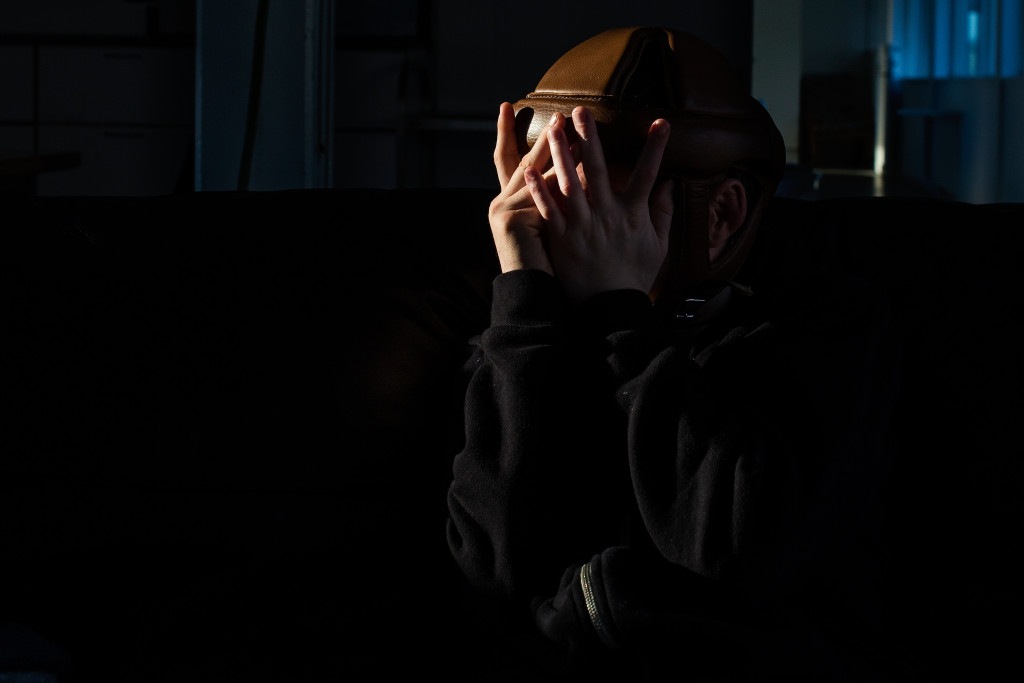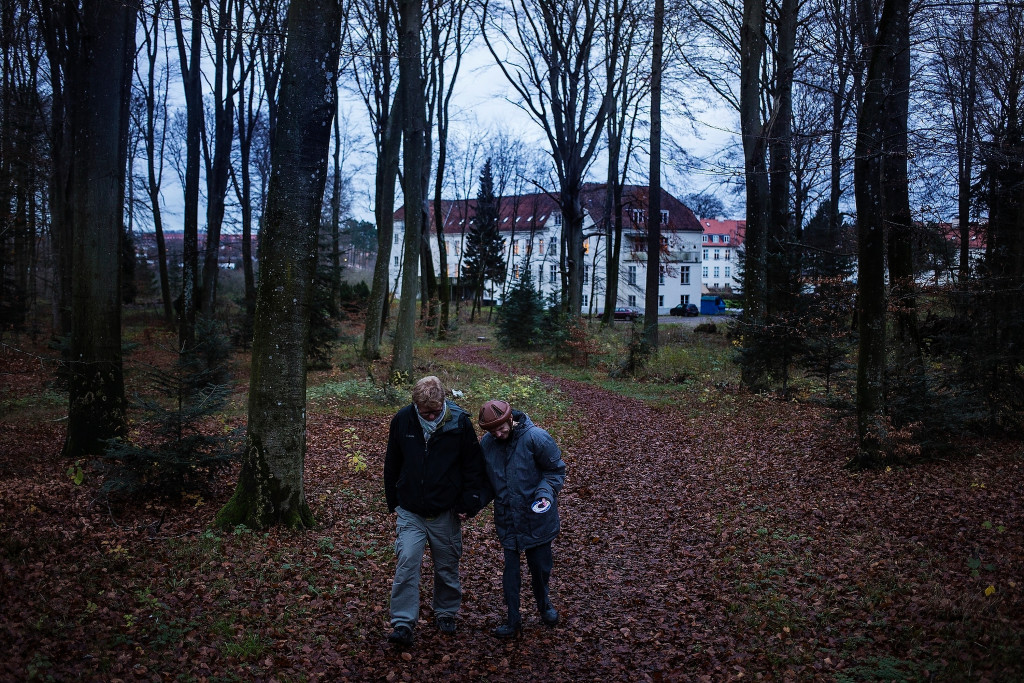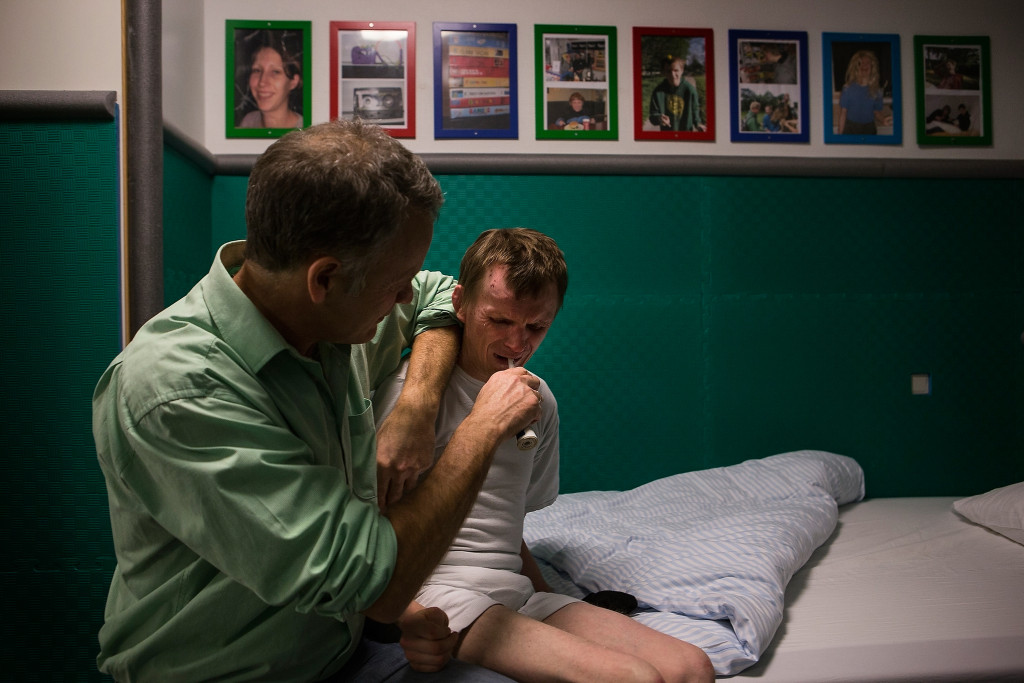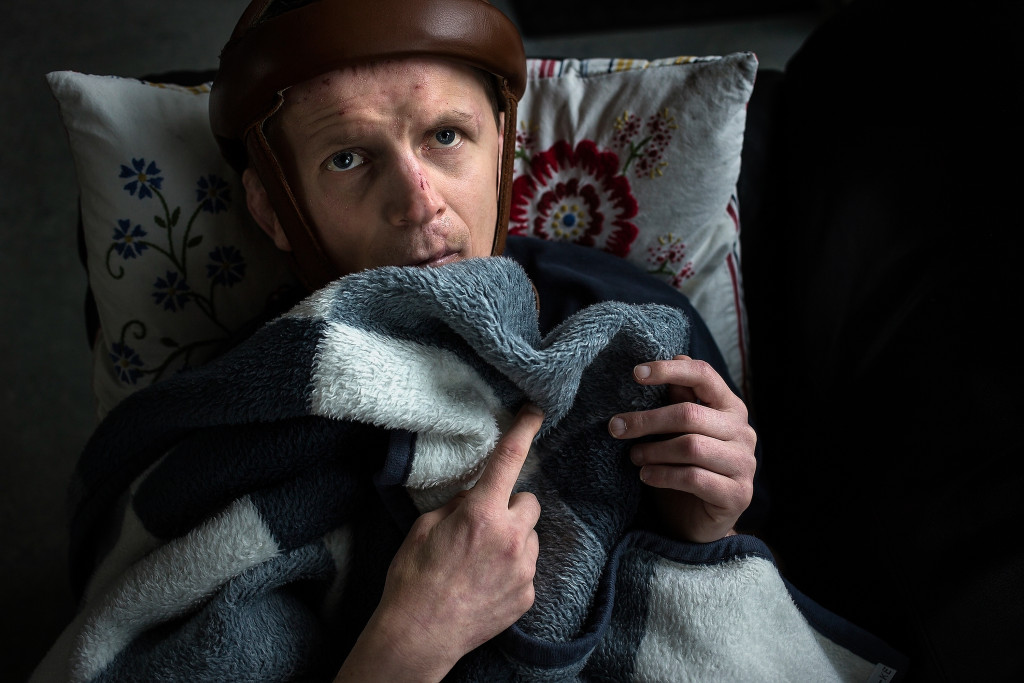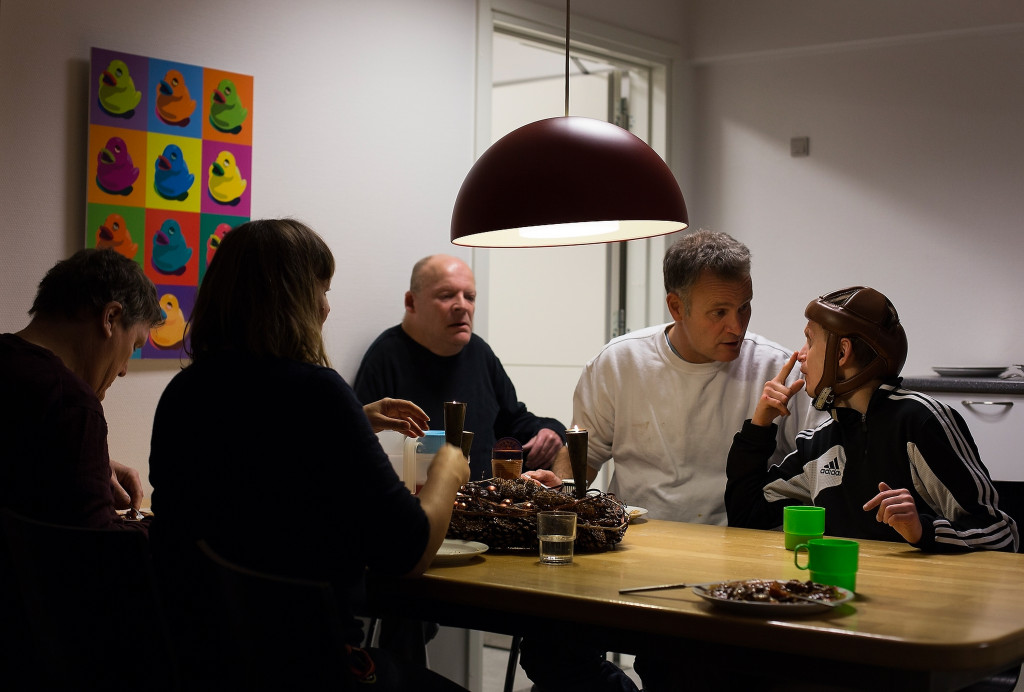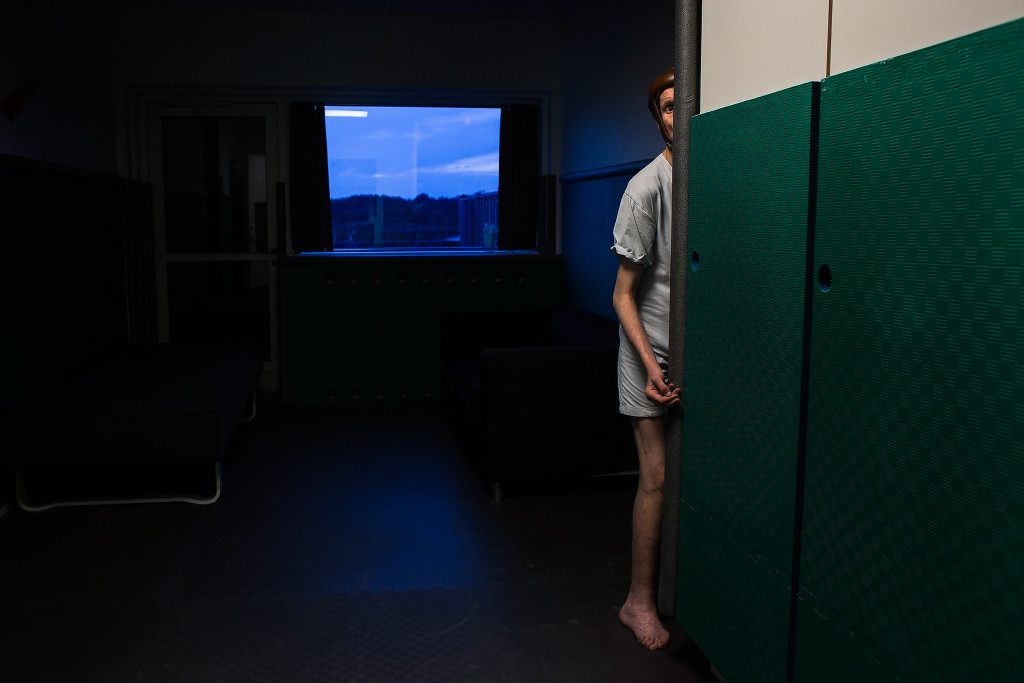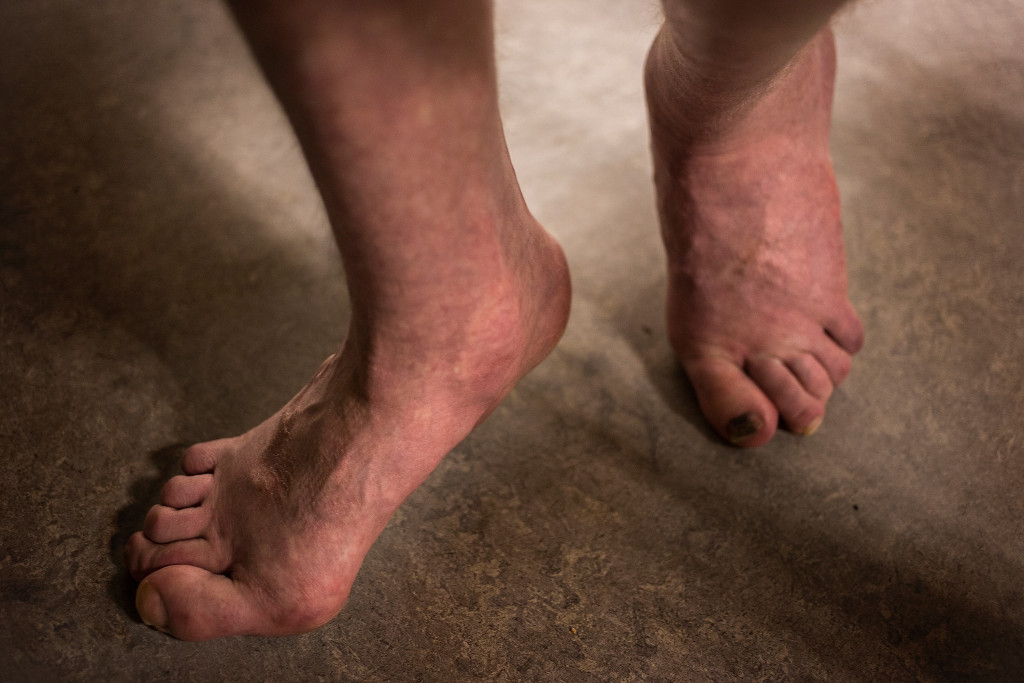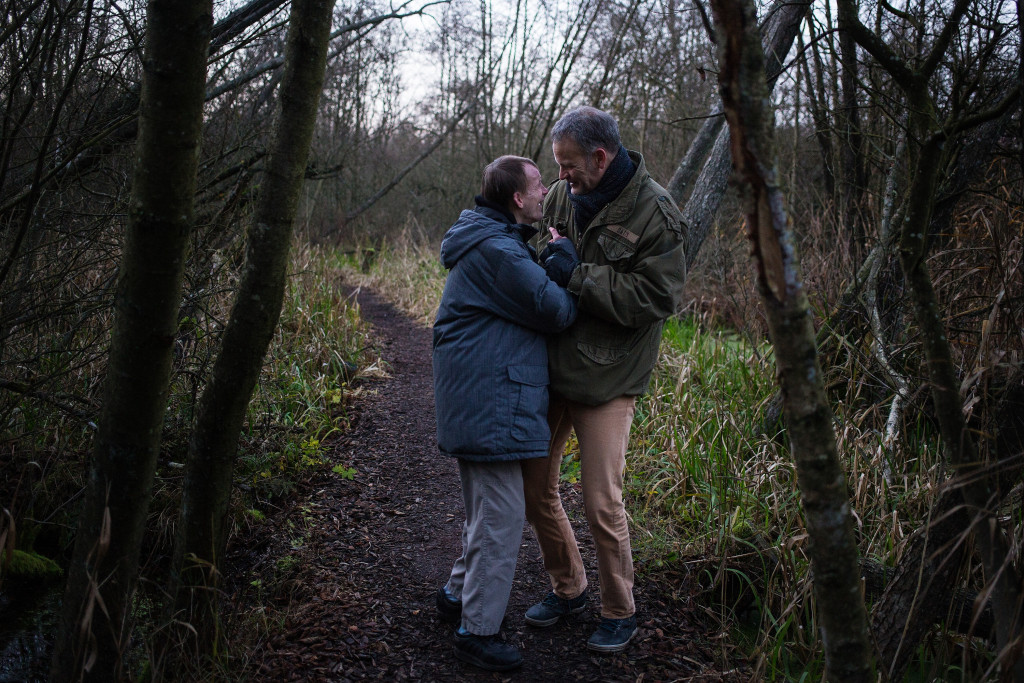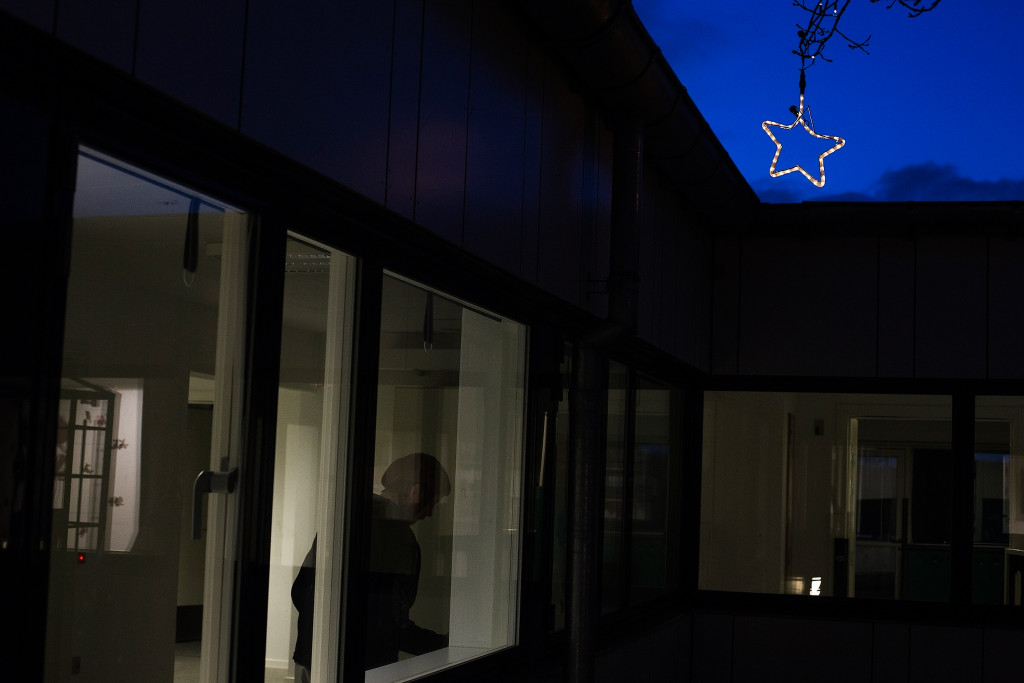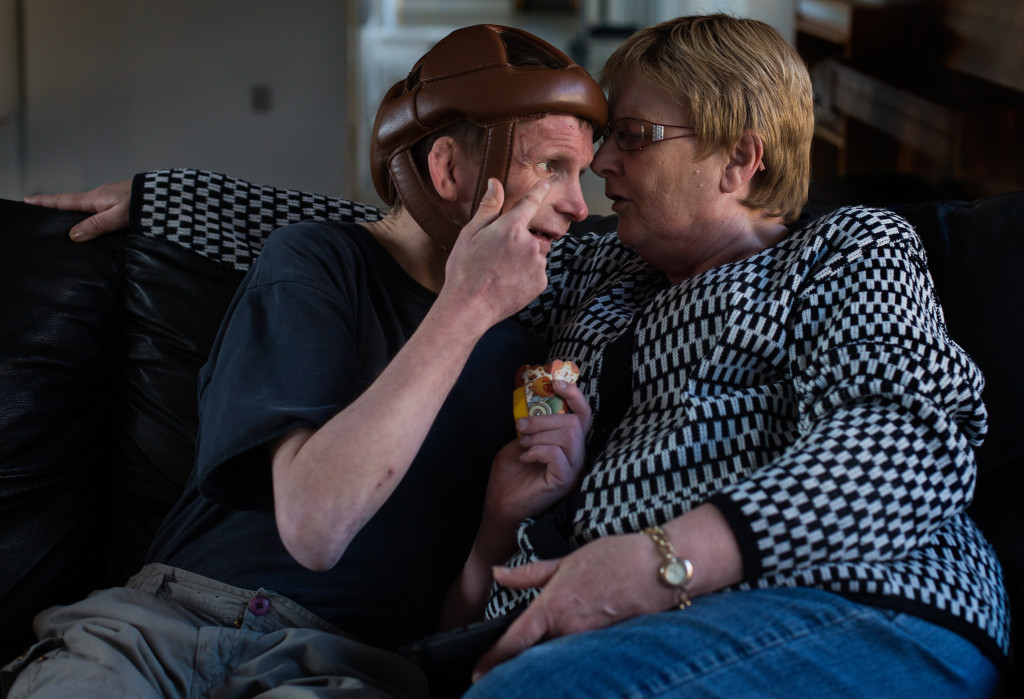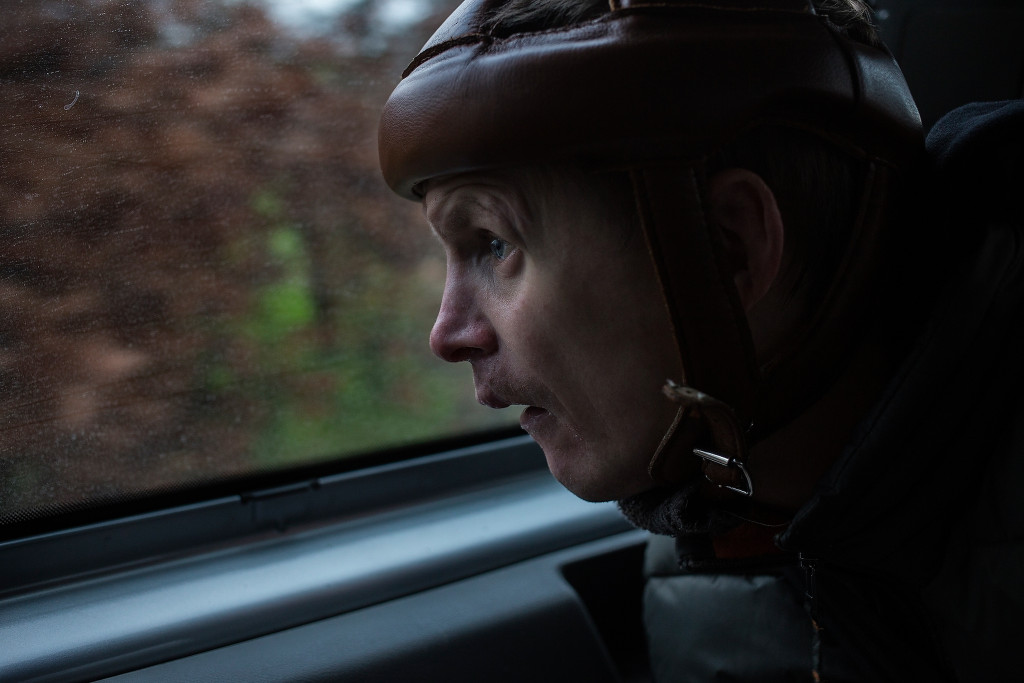Kenth hides behind his hands in the common room of his home at Solund. When the staff members switch shifts, Kenth can regularly be found waiting for the next caretaker by the door.
Kenth walks with his caretaker, Hans, in the forest surrounding Solund. When Kenth first arrived at Solund, simple tasks like taking walks seemed impossible as he often resorted to violence and isolation. Today, it's a frequent activity that Kenth and his caretakers enjoy. "We're always looking for things to do with him, new experiences for him and for us. You have to be able to look at the positive things no matter what behavior they have when they get here. You have to get a small glimpse of the person inside and find out what that person is like," says Niels Christofferson, one of Kenth's caretakers.
Old family photos of Kenth and letters written on postcards from his mother, Britta Ebbeson, have been collected over the years that Kenth has been institutionalized. In the right image, Kenth hugs his younger brother, Mark. "At first we thought that Kenth was a normal child. Before finding out for sure that there was something different about Kenth, we went through a long process with many different doctors, hospitals, and specialists. At first we just thought that he was a slow starter,” Britta says.
Niels Christofferson, Kenth's caretaker of over 7 years, brushes Kenth's teeth just before bedtime. Kenth's body is 35 years old, but he is mentally around the age of 18 months. Seemingly mundane activities like changing his diaper and having his shoes tied can often lead to short outbursts of frustration.
Kenth lies on the couch in the common area of House 15, the resident hall where he lives at Solund. One of Kenth's closest caretakers, Louise, recently left Solund to pursue another job. Some staff members believe Kenth was grieving her departure by comforting himself with long periods on the couch.
Kenth asks Niels for chocolate as his housemates and another caretaker sit at the dining table in the common area following dinner. While he cannot verbally speak, Kenth has developed a unique way of communicating with those around him. Certain motions with his hands represent the name of someone close to him or a request for an action or object. To request chocolate, his favorite food, he taps the tip of his nose.
Kenth peers around the corner of his closet in his room. In the summer of 2014, Kenth suffered a fall that led to a brain injury. Now, he has to wear a special helmet and his entire room is lined with padding.
Kenth's toes began curling inward over the course of his life, which led to walking troubles that cause him to fall and trip. Even indoors, he has to wear special shoes that balance his steps.
Kenth and Niels share a laugh during a walk around the grounds of Solund. Niels and Kenth have developed a close relationship over their time together. Kenth relies on his caretakers for simple tasks. "Kenth is a lot of things, but mostly he's funny. I am amazed how easy it is to change his mood from very poor to very, very happy," Niels says.
Kenth walks through the main hallway of his residence hall, past a tree outside decorated with Christmas stars, to get to his room. Although Kenth is attached to the caretakers closest to him, he prefers to spend his time in solitude, often in his room listening to his favorite artist, Thomas Kellerup.
Kenth signs for his little brother, Mark, by pointing to his left eye during a visit with his mother. Although Kenth lives at Solund, his family comes to visit often. Britta visits every Saturday.
Kenth watches the trees rush by as Niels takes him for a drive in the Danish countryside. Kenth's behavior has improved dramatically over the years, but some days Kenth is demanding of his caretakers and repeatedly signs and expects a response. The long drives are often used as a type of therapy. "I suppose that looking from the outside it would seem that he has no life at all, but it's not true. He has so many abilities and so much potential for development. I mean, since we started working with him, there has been ongoing progress. There's no telling where he'll be 10 years from now. I’m filled with pride when I think about it and when I think back on the time when he moved in here. I've been a part of the difference we have made. It's been a lot of work, but it's definitely worth it," Niels says.
